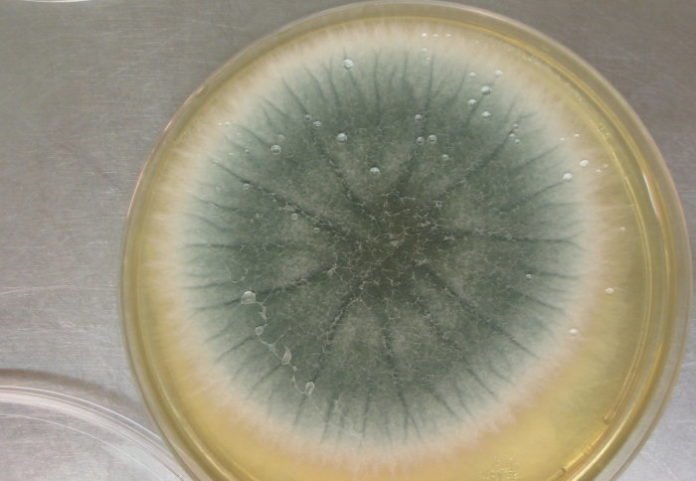A new study carried out by an international group including researchers from Imperial’s Department of Medicine has uncovered how a common fungus, which kills an estimated 200,000 people a year, triggers our immune system.
Aspergillus fumigatus is a mold generally observed in the dust, compost and damp buildings, whose spores can cause lung disease and allergic reactions, and are related to asthma.
For most healthy people, inhaling the spores do not lead to disease but for those with compromised immune systems, it can be life-threatening.
Invulnerable patients, such as those undergoing transplantation, it can lead to invasive infections that are difficult to diagnose and treat and can be fatal in more than half of cases.
This new study has elucidated how our immune systems respond to this dangerous microorganism.
In the study, published in the journal Nature, a group led by the MRC Centre for Medical Mycology at the University of Aberdeen have recognized a new mechanism that responds to an ‘unexpected’ part of the fungus, triggering the immune system.
Antecedently, scientists thought that the immune system recognized the fungi from sugars in their cell walls, but the group of scientists discovered that immune cells are able to recognize a pigment in the fungi called melanin.
They likewise discovered that variants of the receptor that detects the pigment called MalLec, make some people more susceptible to infection.
According to the researchers, the findings could assist in the advancement of new diagnostic tools and medications to help battle these kinds of infections.
Professor Ten Feizi, Director of the Glycosciences Laboratory at Imperial College London, said, “In our Wellcome Trust-supported carbohydrate microarray facility, we analyzed the immune cell receptor (MelLec) for binding to a large number of sugar structures.
“It was unpredicted to find that it binds to melanin on the fungus rather than sugars, and this is what triggers the immune cells to respond.”
Dr. Yan Liu, the Project Leader of the Carbohydrate Microarray Facility in the Glycosciences Laboratory at Imperial said, “High impact collaborative research such as this is typical of the activities in our Carbohydrate Microarray Facility.
“By understanding exactly how these fungi trigger the immune system, our findings lay the groundwork for new tools to fight these difficult to treat fungal infections.”
Professor Gordon Brown, from the University of Aberdeen, who led the study, said, “This is a fungus that most of us come into contact with on a daily basis without consequence. However, for vulnerable people undergoing serious medical interventions, it can be fatal.
“Understanding how our immune system responds to this invader is crucial to improving our ability to identify its presence in infected people and to develop therapies to help us treat this disease.
“This latest finding revealed that our immune system is responding to parts of the fungus we previously didn’t know it recognized. Whilst this discovery is a huge step forward it emphasizes just how complex the fight against these fungi is.”
